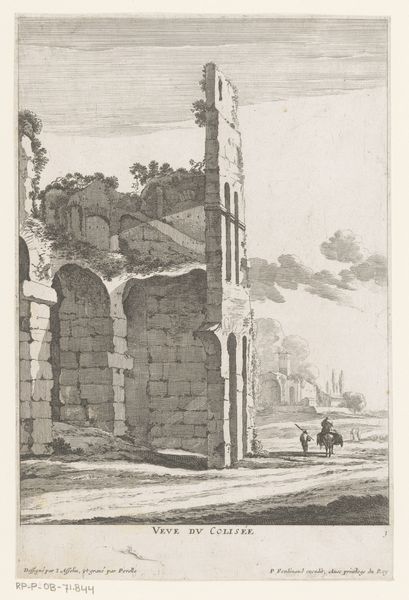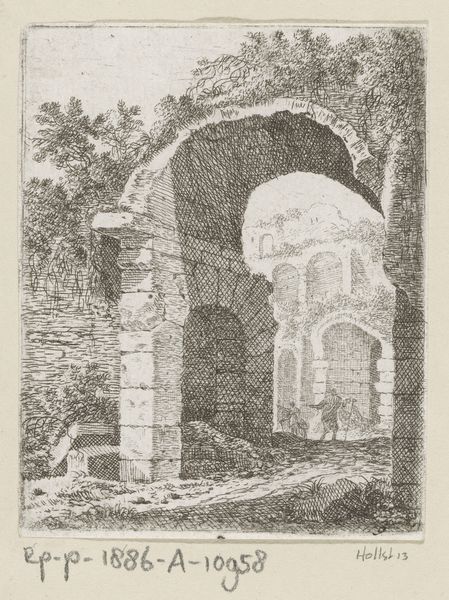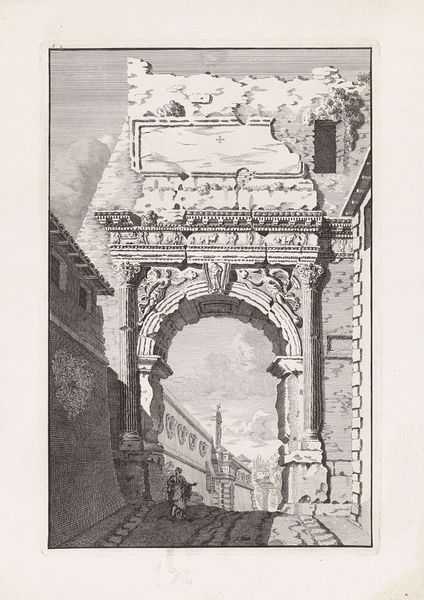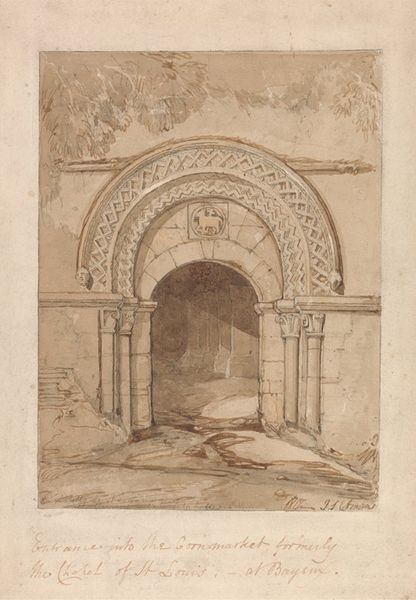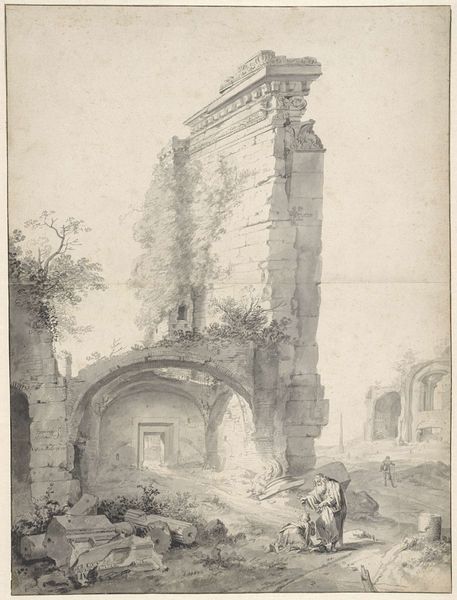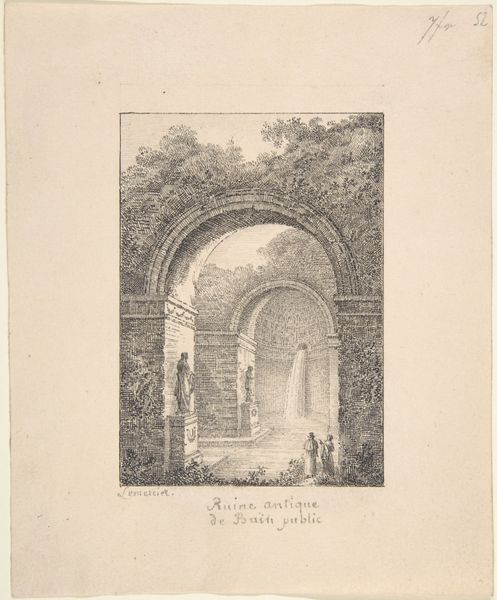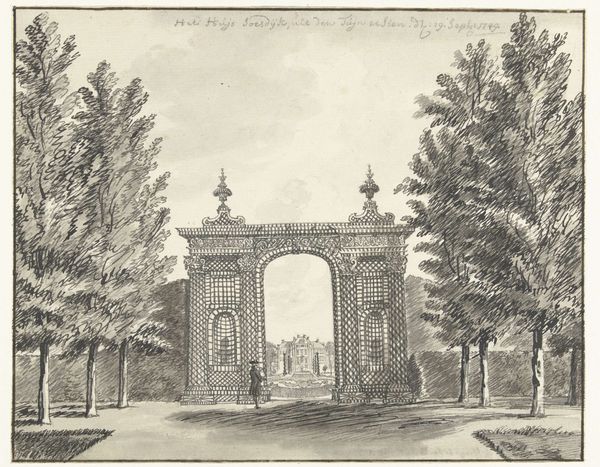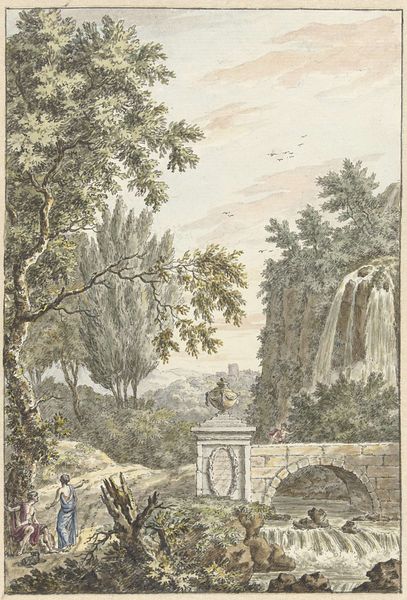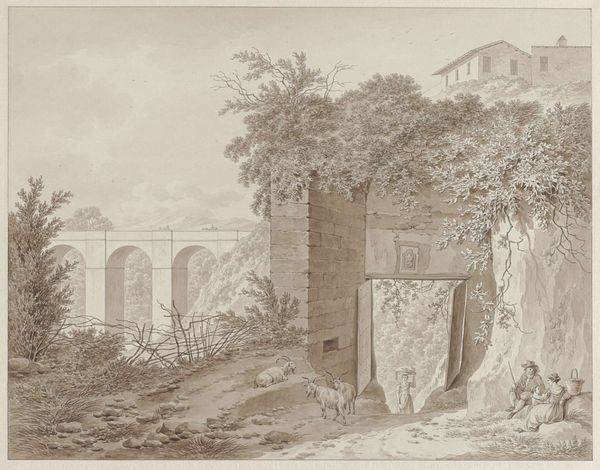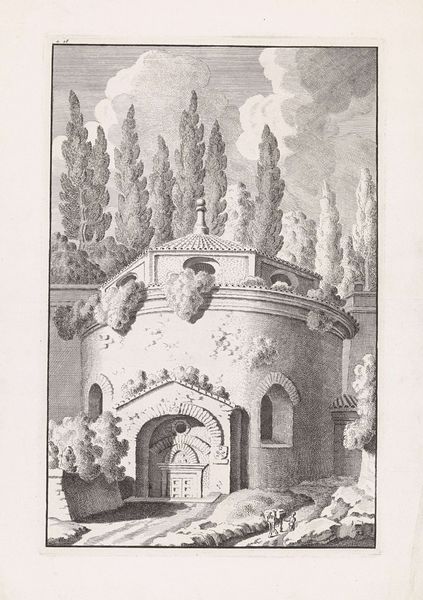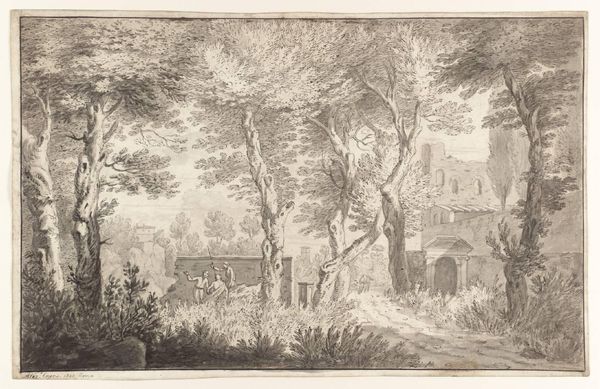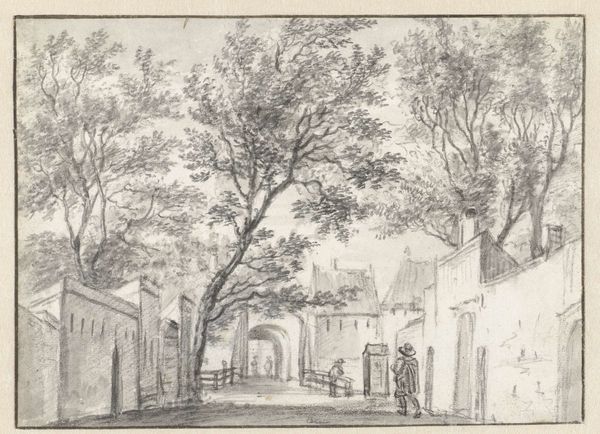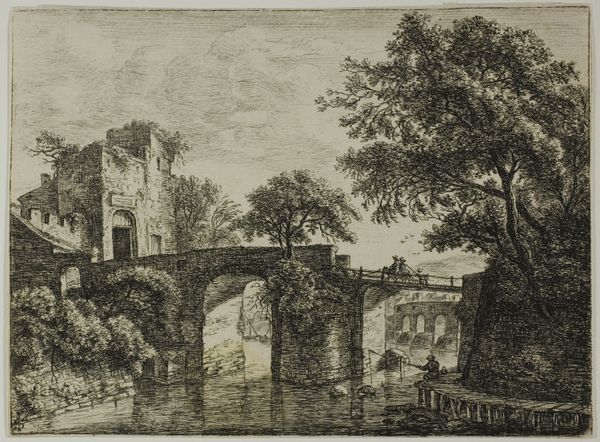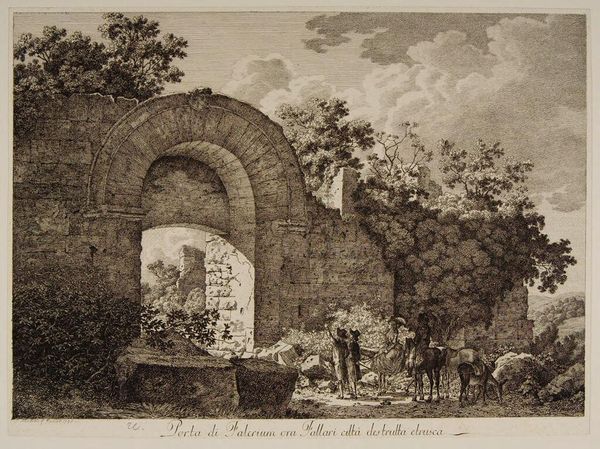
drawing, etching, ink
#
drawing
#
neoclacissism
#
etching
#
landscape
#
classical-realism
#
etching
#
ink
#
romanticism
#
cityscape
Dimensions: height 265 mm, width 211 mm
Copyright: Rijks Museum: Open Domain
Curator: Here we have Daniël Dupré's "Arch of Drusus in Rome," created in 1789 using ink and etching techniques. It's a rather captivating cityscape. Editor: It really is. The first thing that strikes me is the interplay between the stark, monumental architecture and the encroaching wilderness. It feels melancholic. Curator: That's insightful. Dupré, working in the late 18th century, captured a moment when Neoclassicism and Romanticism were intertwined. The arch itself, a vestige of Roman imperial power, stands as a symbol of order and history. Yet, the way nature reclaims it speaks to a transience, perhaps even a critique of empire. Editor: Precisely! Look at the meticulous detail in rendering the arch's stones against the looser, almost frenzied lines describing the foliage. There’s a tension between control and chaos, mirroring larger social and political shifts. Was this a conscious commentary on power structures being undermined or in decay? Curator: Dupré's position is hard to pin down. Artists of this period grappled with antiquity in complex ways. For some, Rome represented an ideal of civic virtue and artistic achievement to be emulated. For others, it was a cautionary tale about the rise and fall of civilizations. The arch as ruin highlights the inevitable decline. Editor: And there's the human element – the figures passing through the arch. They're small, almost insignificant, further emphasizing the monumentality of the past, but also suggesting a continuation of life despite the ruins. Who do you think these subjects represent? Curator: Likely everyday Roman citizens, unaware, or perhaps indifferent to the deeper historical weight of the arch. I'd argue their relative smallness is Dupré’s way to indicate scale, offering contrast to emphasize architectural prowess, a hallmark of classical-realist artistic depictions in the late 18th-century. Editor: Perhaps, but there's also an aspect that can indicate marginalization. The common person walking towards the arch in order to take on it's role in Rome is being diminished by it’s architecture and imperial might. In a revolutionary context of liberty this imagery takes on a potent undertone of challenging such structure in pursuit of the ideals of democracy. Curator: A compelling alternative interpretation. Ultimately, Dupré’s work invites us to contemplate our own relationship with history and power. Editor: Indeed. It's a conversation between past grandeur and present realities that resonates profoundly even now.
Comments
No comments
Be the first to comment and join the conversation on the ultimate creative platform.
